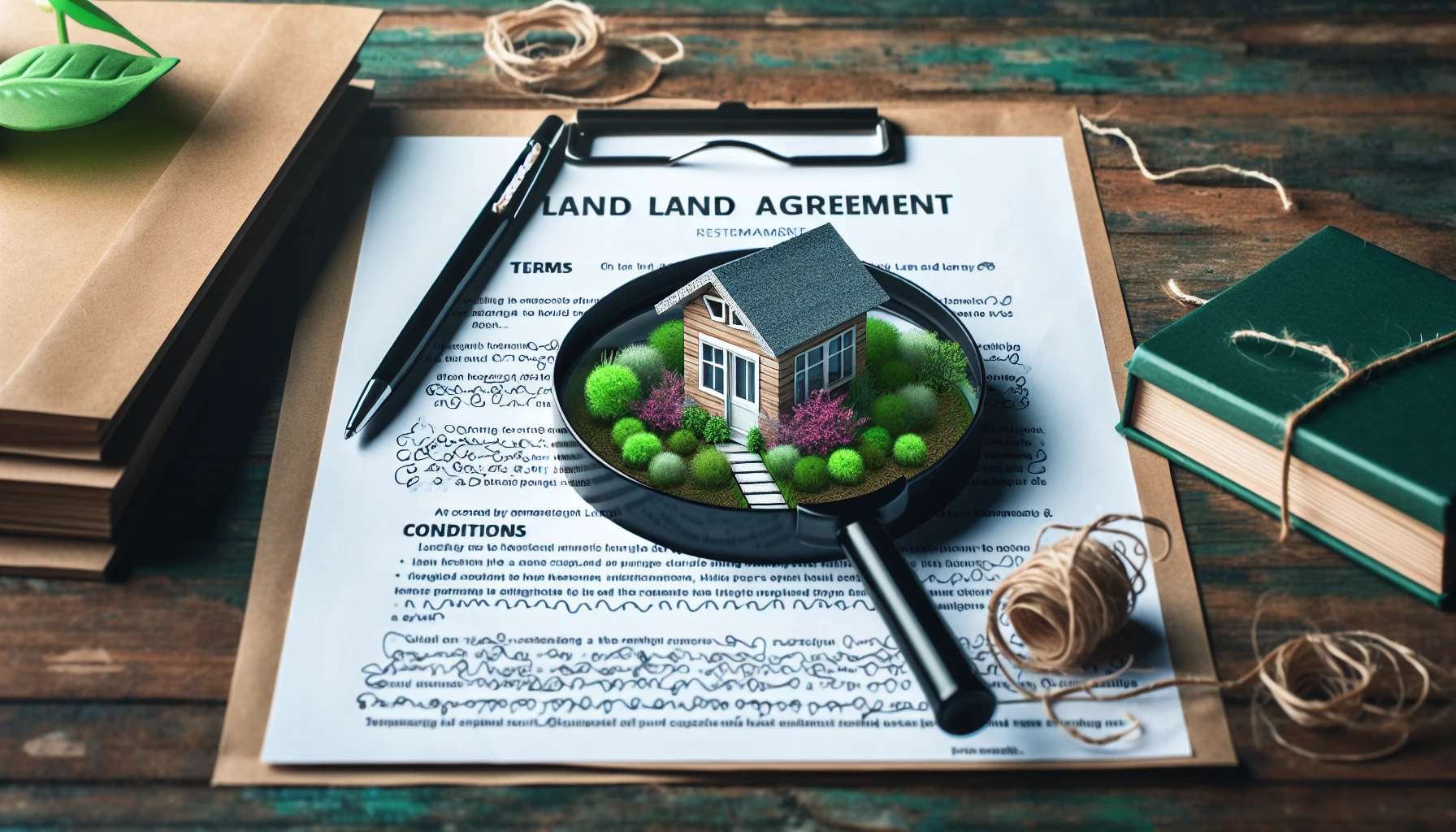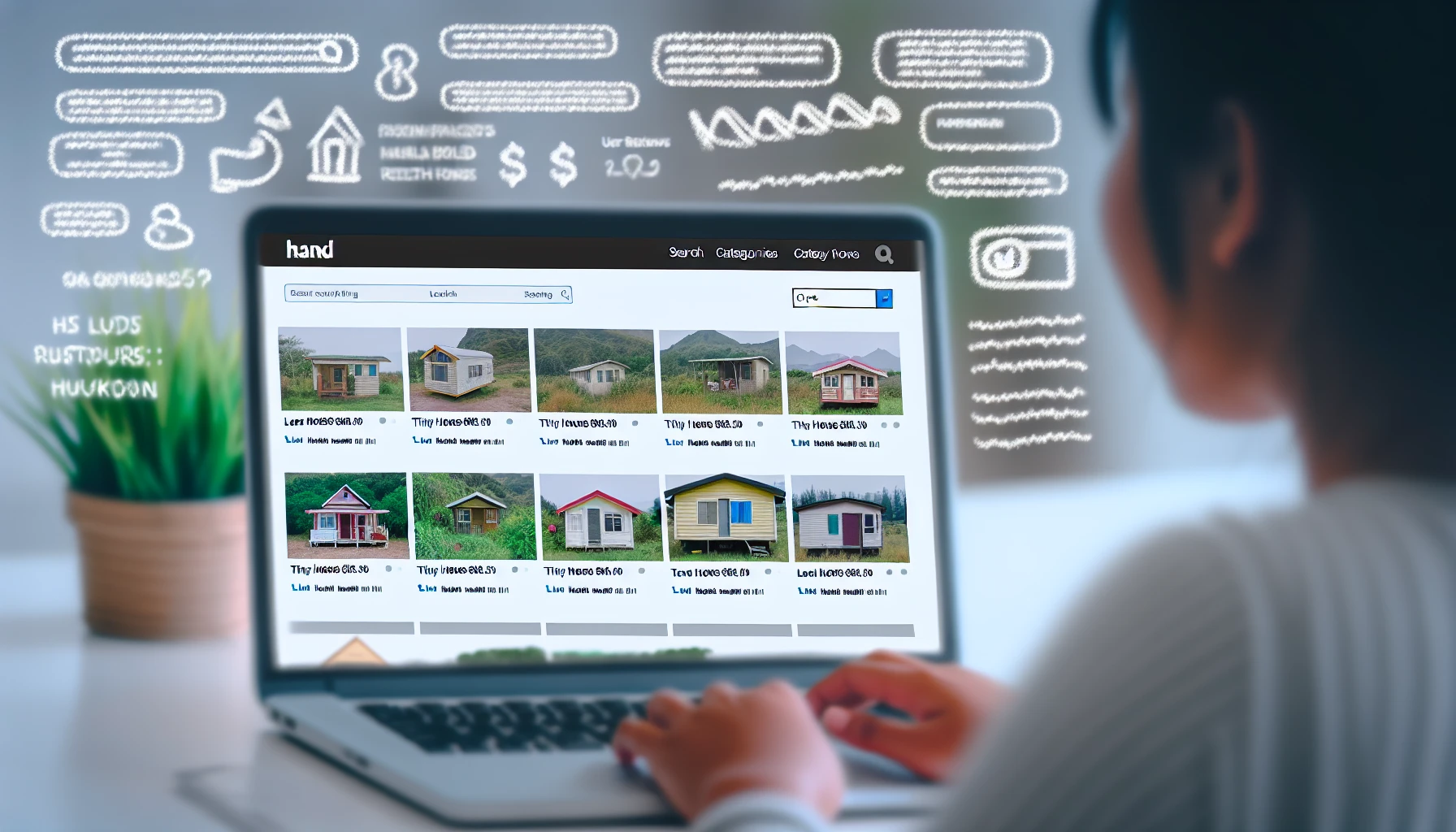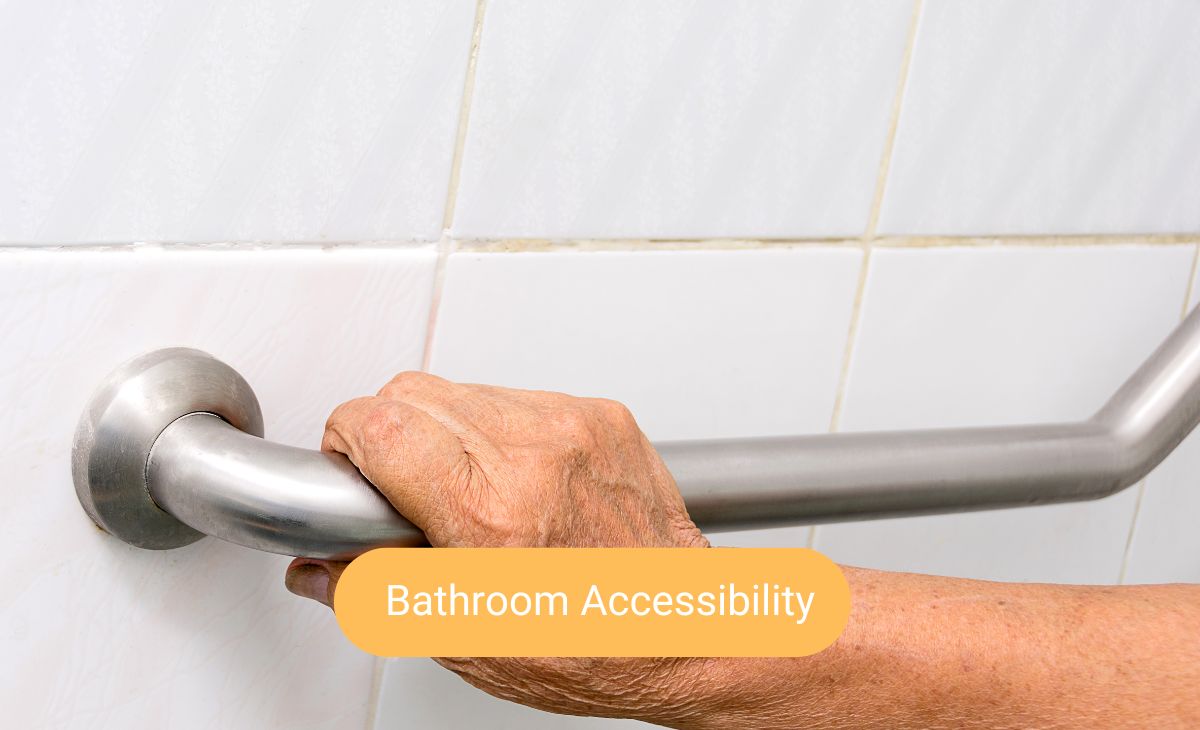Have you ever considered the opportunities that come with the growing trend of tiny house living? As a landowner, renting out your land to tiny house owners can be both profitable and rewarding. In this Tiny House Land Rental Land Owners Guide, we’ll explore the essential steps to successfully navigate leasing your land for tiny houses and create a harmonious living environment.
Key Takeaways
Navigate tiny house land rentals with ease by understanding the movement, preparing your land for tenants, setting rental rates & terms, and building a supportive community.
Address zoning/permitting challenges and potential issues through research & communication to ensure successful rental experiences.
Foster connection among renters with shared amenities, communal spaces & events/activities while maintaining upkeep of property.
Understanding the Tiny House Movement
The tiny house movement is all about affordable, sustainable, and minimalist living, which includes tiny house land rental options for those interested in this lifestyle. Why is it beneficial for landowners to grasp the concept of the tiny house movement? Well, understanding this growing trend can help you better cater to the needs of potential tiny home owners and tap into a niche market.
People interested in dwelling in a tiny house but not wanting to commit to buying land might be keen on renting land for a tiny house. The Australian Tiny House Association is working to improve the legalities of tiny house living, helping people achieve their tiny house dream. Familiarizing yourself with this lifestyle and exploring options like Aussie tiny houses allows you to provide the right environment and meet the unique needs of tiny house dwellers, including the tiny house owner.
Preparing Your Land for Tiny House Rentals

Considering leasing your land for tiny houses requires ensuring your property is aptly prepared for this unique living arrangement. This involves ensuring accessibility, providing utilities, and establishing privacy and boundaries for both landowner and tenant.
These critical aspects will be detailed in the subsequent sections.
Accessibility
Accessibility is of utmost importance for tiny house rentals. As a landowner, you should ensure there is a clear path for tiny house delivery and ongoing access for tenants. The access road needs to be 3m wide and have a 4.3m high clearance, which is essential for those pursuing their tiny dreams.
Also, consider any potential obstacles, such as tight roads or low-hanging wires, that might affect delivery and access to the rented land.
Utilities
Essential utilities like water and electricity contribute to a comfortable living experience. Discuss with potential tenants which utilities are included in the rental rate and which ones they need to take care of.
For water supply, consider options like mains water, water tanks, or off-grid solutions like rainwater harvesting systems.
Electricity options for tiny houses can include hooking up to the grid or using off-grid solutions like solar or wind power.
Privacy and Boundaries
Maintaining a harmonious living environment requires setting clear privacy and boundaries between the landowner’s property and the rented space. To mark off boundaries, consider putting up solid, high fences that provide privacy and act as a deterrent for any unwanted visitors.
Landscaping elements like tall trees or shrubs can also serve as natural screens, enhancing the privacy within the rented space.
Setting Rental Rates and Terms

Establishing rental rates and terms is a fundamental step in leasing your land to tiny house owners. This involves researching the market, determining lease duration, and considering additional fees for utilities or amenities.
The subsequent sections will offer guidance on setting competitive rental rates and determining mutually agreeable lease terms.
Market Research
Conducting market research helps determine competitive rental rates, considering factors like location, size, and amenities of your land. Investigate local real estate websites, online classified ads, and tiny house communities to get an idea of prevailing rental rates in your area. Keep in mind that factors like location, demand, and the size of the land can influence the rental rates.
Lease Duration
Lease duration can be negotiated as a fixed-term or month-to-month agreement, depending on the preferences of both parties. Long-term lease agreements may provide ongoing income for the landlord and stability for the tenants, while month-to-month leases offer more flexibility.
Discussing lease duration with potential tenants to find a mutually agreeable term is a necessary step.
Additional Fees
Additional fees for utilities, maintenance, or shared amenities should be discussed and agreed upon before finalizing the rental agreement. Make sure to inform potential tenants about any extra costs associated with tiny house rentals, such as land rental fees, utility costs, or cleaning fees.
Being transparent about all fees and additional costs can help prevent misunderstandings and disputes later on.
Marketing Your Land to Attract Tiny House Owners

Effective marketing of your land is required to attract tiny house owners seeking rental options. This can be done through online listings, social media, and networking within the tiny house community.
The subsequent sections will offer tips on leveraging these marketing channels to reach a broader audience of prospective tenants.
Online Listings
Online listings on dedicated tiny house rental websites or general rental platforms can help landowners reach a wider audience of potential tenants. To make your listing more effective, consider including:
High-quality photos of your land and its amenities
A comprehensive description of your land, including its location, size, and any unique features
Clear rental information, such as the price, lease terms, and any additional fees or requirements
Any rules or restrictions that tenants should be aware of
Contact information for interested parties to reach out to you
By providing all the necessary information, including how much land is available, and presenting it in an appealing way, you can make your land more attractive to potential tenants.
Social Media
Social media platforms and tiny house groups can be used to share information about available land and connect with interested renters. Use platforms like Facebook, Instagram, and Twitter to promote your land and reach a broader audience of potential tiny house renters.
Engaging with the tiny house community on social media can also help build connections and find tiny house owners as potential tenants.
Networking
Networking within the tiny house community through events, workshops, or online forums can help landowners build connections and find potential tenants. Attend tiny house events like the Online Global Tiny House Conference and the Tiny House Festival Australia to meet other enthusiasts and share your land rental opportunities.
Building relationships within the tiny house community can lead to word-of-mouth referrals and attract more renters.
Creating a Comprehensive Rental Agreement
A detailed rental agreement is fundamental for a successful tiny house land lease. This agreement should address legal requirements, outline responsibilities and expectations, and establish a dispute resolution process.
These key components of a rental agreement will be discussed in more detail in the subsequent sections.
Legal Requirements
Legal requirements for tiny house land rentals vary by location. Landowners need to be aware of local zoning laws, permits, and building codes to ensure compliance during a tiny house build. This may involve checking with the relevant authorities in your area to determine if tiny houses on wheels are considered caravans and subject to specific requirements.
Responsibilities and Expectations
Clearly outlining the responsibilities and expectations of both landowner and tenant in the rental agreement can help prevent misunderstandings and disputes. This may include rent payment terms, maintenance responsibilities, and rules regarding shared amenities or communal spaces.
Transparency about these responsibilities contributes to a harmonious living experience for both parties.
Dispute Resolution
Including a dispute resolution process in the rental agreement can provide a framework for addressing concerns and resolving conflicts amicably. This may involve a commitment to open communication, mediation, or compromise to reach a resolution that both parties are satisfied with.
Having a clear dispute resolution process in place can help maintain a peaceful living environment.
Building a Supportive Community for Tiny House Renters

Creating a supportive environment for tiny house renters involves offering shared amenities, establishing communal spaces, and planning events and activities.
The subsequent sections will discuss how to foster a welcoming environment and a sense of community for tiny house renters.
Shared Amenities
Shared amenities such as laundry facilities, gardens, or recreational areas can enhance the living experience for tiny house renters and foster a sense of community. Providing these amenities not only improves the quality of life for your tenants but also encourages interaction and camaraderie among the tiny house community members.
Communal Spaces
Communal spaces for socializing, working, or relaxing can help create a welcoming environment for tiny house renters and encourage positive interactions. Designing these spaces with the specific needs and preferences of your tenants in mind can promote a sense of belonging and community engagement.
Events and Activities
Organizing events and activities for the tiny house community can strengthen connections between renters and promote a sense of belonging. These activities may include community gatherings, shared meals, or workshops related to tiny house living.
Encouraging participation and interaction through events and activities can help create a vibrant, supportive community for your tiny house renters.
Navigating Challenges and Potential Issues
Managing challenges and potential hiccups in tiny house land rentals involves addressing zoning and permitting concerns, implementing conflict resolution strategies, and managing maintenance and upkeep.
The subsequent sections will discuss how to tackle these challenges and create a successful tiny house rental experience as part of your tiny house journey.
Zoning and Permitting
Zoning and permitting challenges can be addressed by researching local regulations, obtaining necessary approvals, and staying informed about changes in legislation.
Understanding the local zoning laws and permits related to tiny houses can help ensure your land rental complies with regulations, sidestepping potential legal issues.
Conflict Resolution
Conflict resolution strategies such as open communication, mediation, and compromise can help maintain a harmonious living environment for both landowner and tenant. Addressing disputes promptly and respectfully can prevent issues from escalating and ensure a peaceful, supportive community for your tiny house renters.
Maintenance and Upkeep
Regular maintenance and upkeep of the rented land and shared amenities are essential for ensuring a safe and comfortable living experience for tiny house renters. As a landowner, promptly addressing any maintenance issues and keeping the property in good condition is important. This not only safeguards your investment but also fosters a positive living environment for your tenants.
Summary
Renting land to tiny house owners can be a rewarding and profitable venture for landowners. By understanding the tiny house movement, preparing your land, setting rental rates and terms, marketing your land effectively, creating a comprehensive rental agreement, building a supportive community, and navigating potential challenges, you can create a harmonious and successful tiny house rental experience for both landowners and tenants. So why not explore the possibilities of tiny house land rentals and help others pursue their tiny house dreams?
Frequently Asked Questions
Can I live in a tiny house on my own property Australia?
It is possible to live in a tiny house on your own property in Australia as long as it’s within the regulations of the local council. Depending on where you live, you can park it for up to 60 days of the year without requiring consent. However, it cannot be left there for more than 48 hours at a time.
What is the return on tiny houses rental?
Tiny houses offer great returns on investment with rental yields up to 5.6% through platforms such as AirBnB, Tiny Rentals and Tiny Away with nightly rates of around $200 per night.
Do you need council approval for a tiny house in Queensland?
Yes, if you’re building a tiny house on wheels in Queensland, you’ll need to get local council approval in order to comply with the applicable local laws. If your tiny house is built on a vacant lot, you’ll need to meet additional building codes and standards.
Do you need a permit for a tiny house in Victoria?
No planning approval is needed in Victoria for a tiny house, though you may need administrative approval and building permits.
What is the tiny house movement, and why should landowners be aware of it?
The tiny house movement is all about affordable, sustainable and minimalist living, presenting opportunities for landowners to rent out their land and tap into a niche market.


